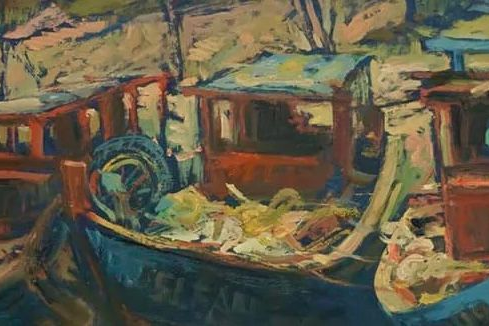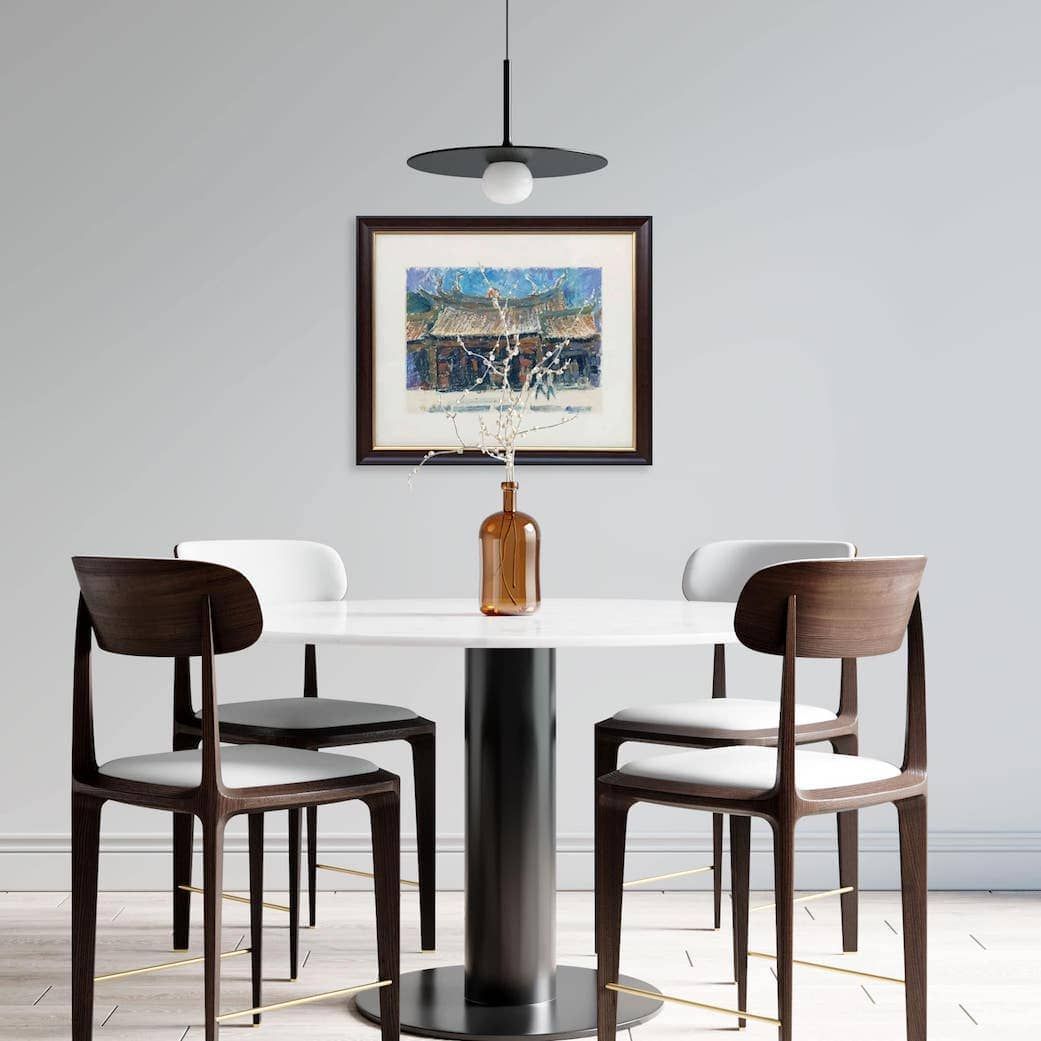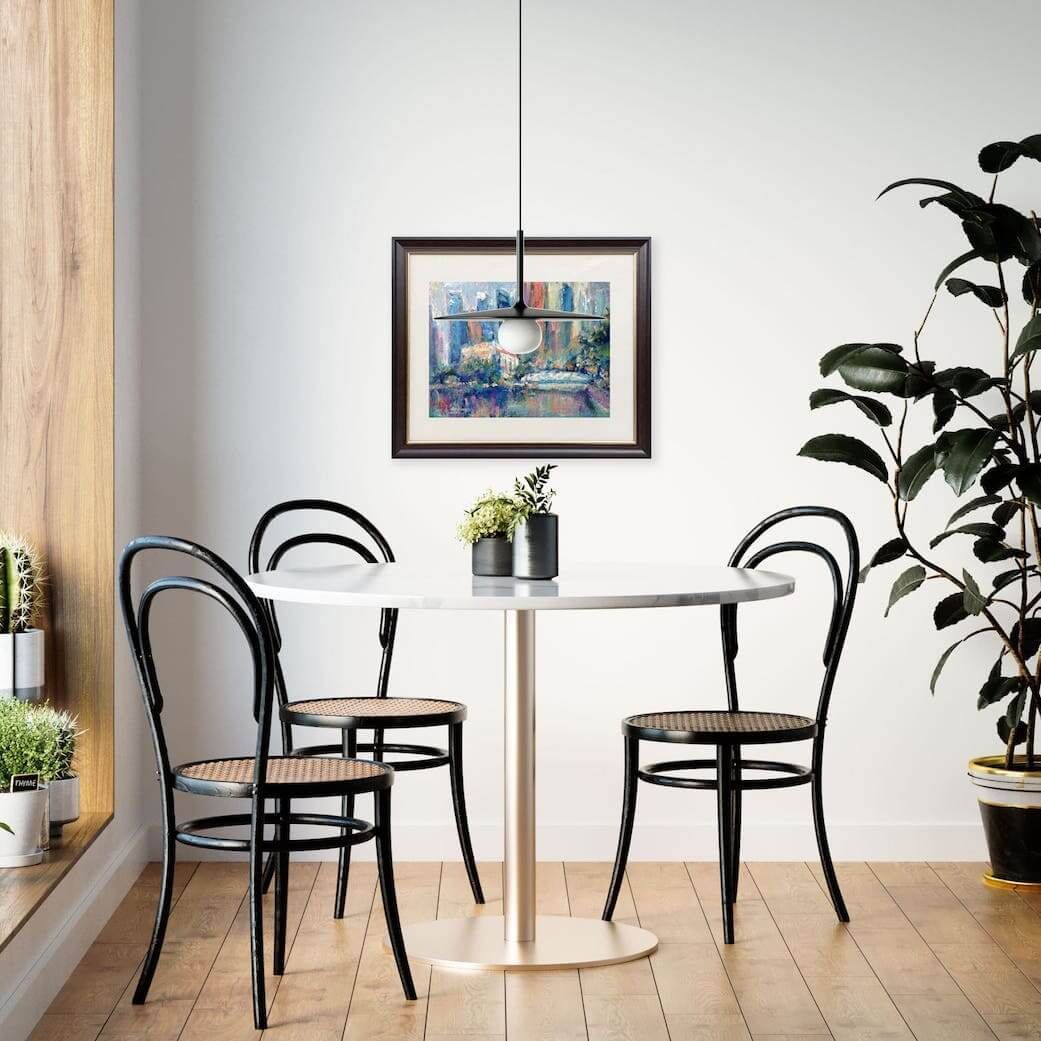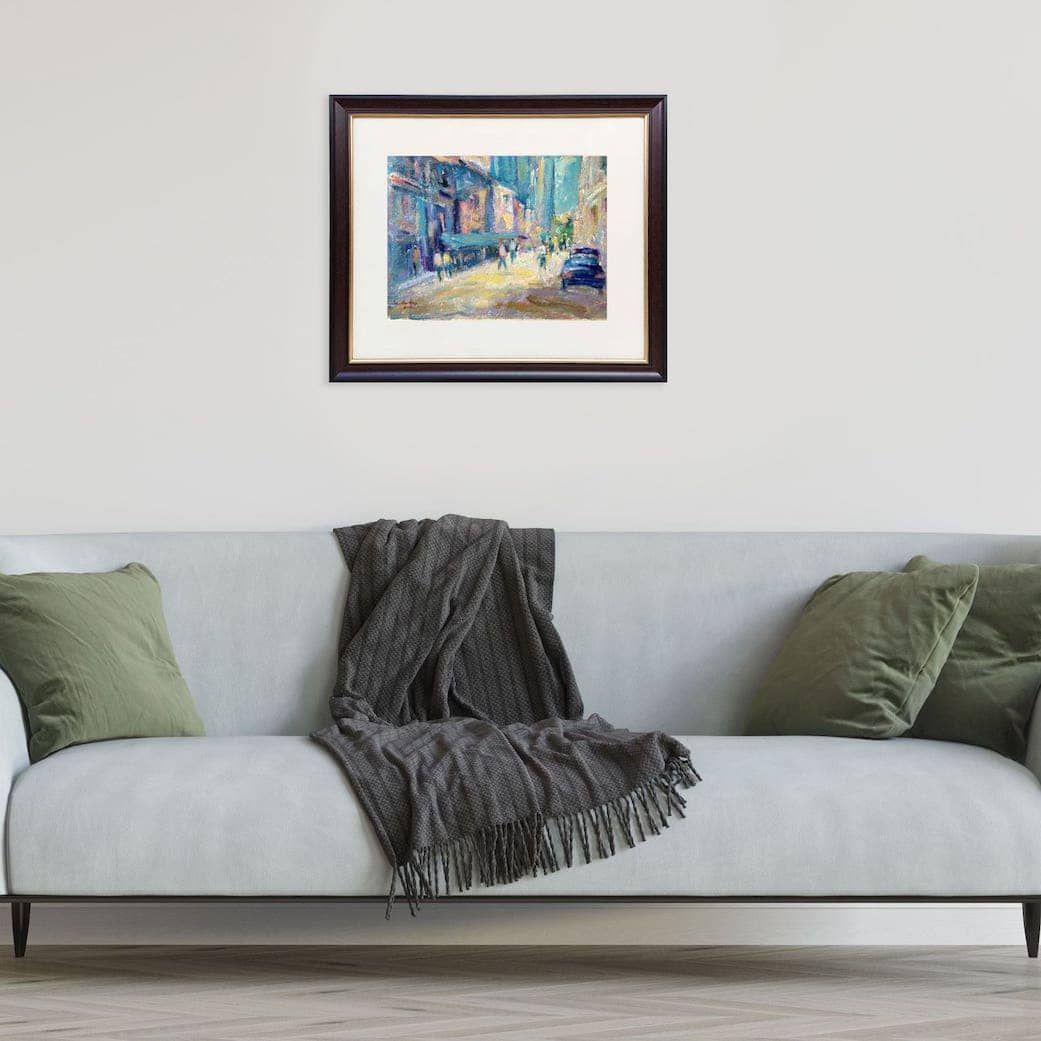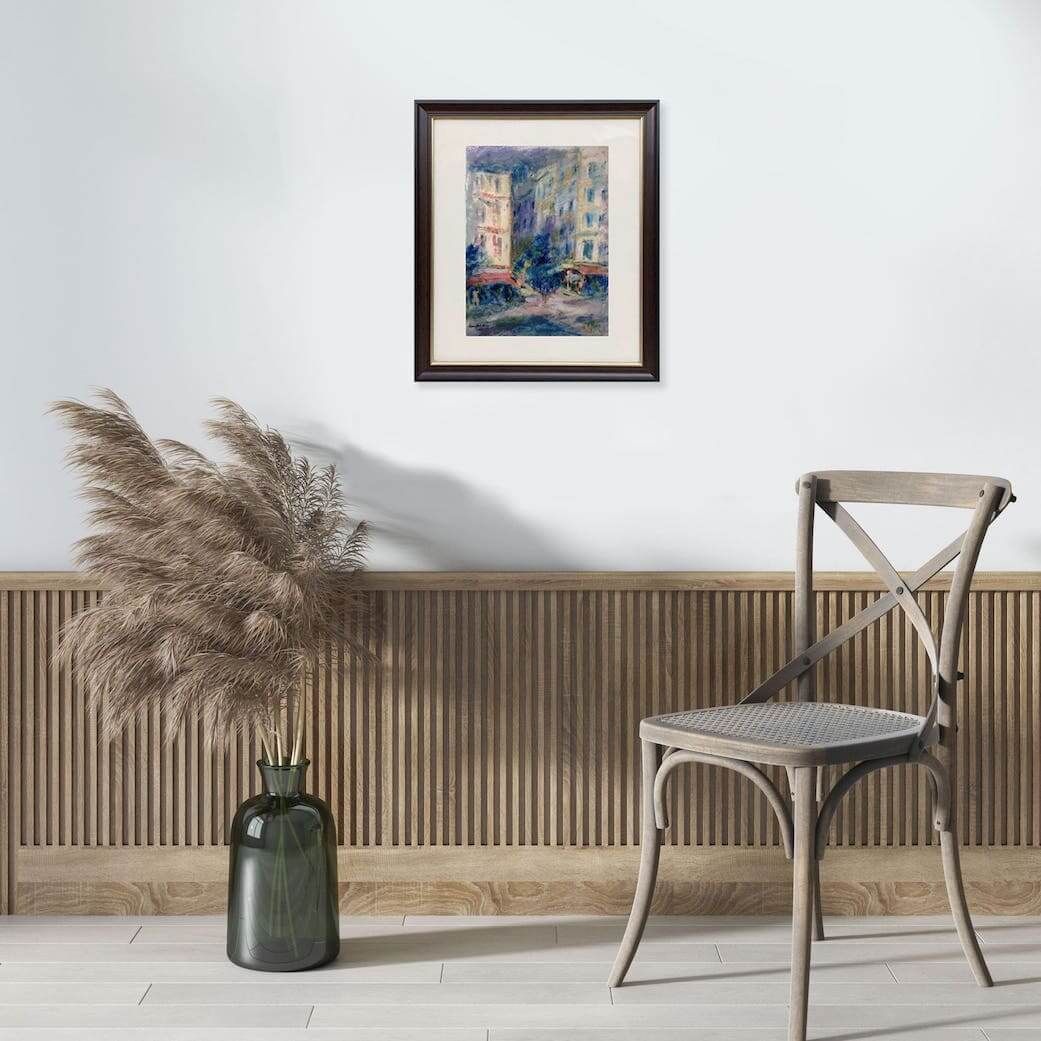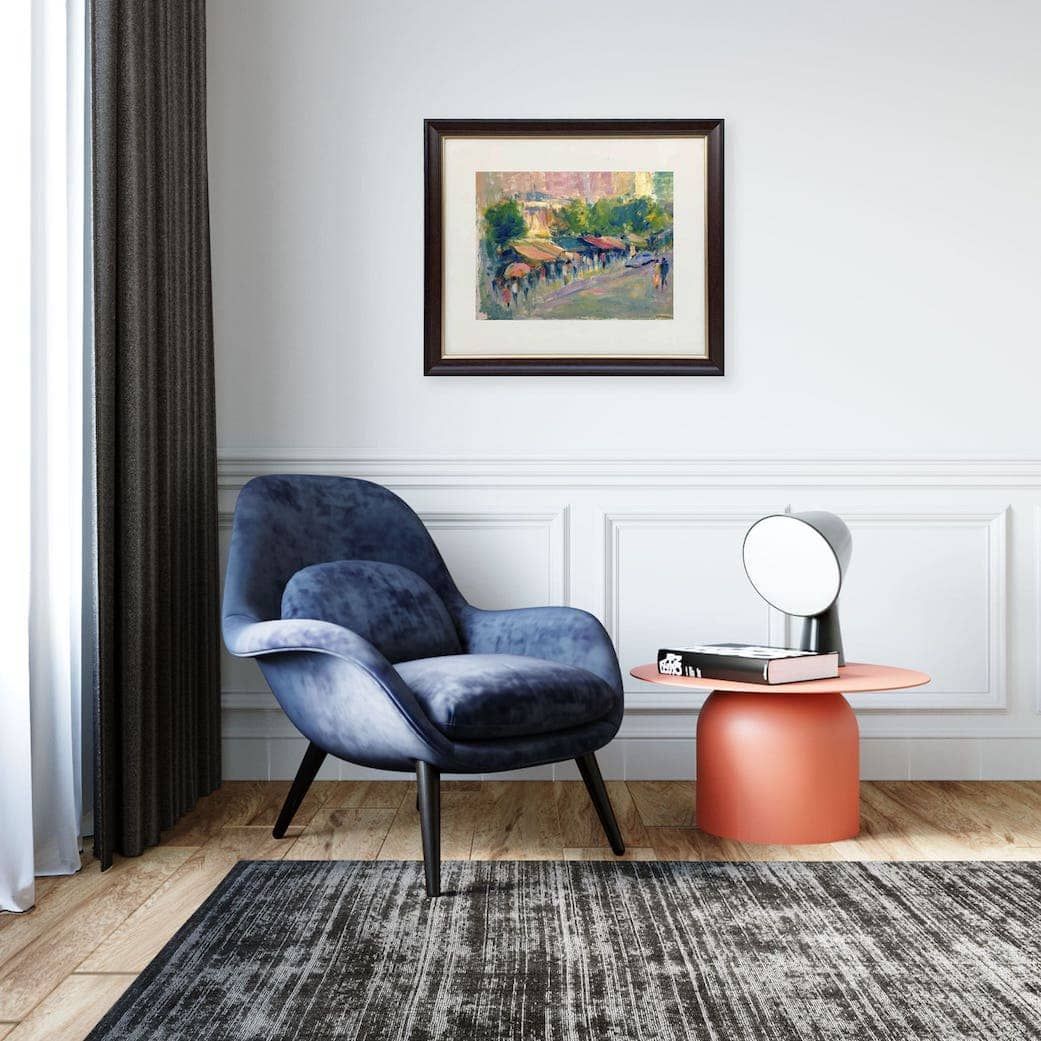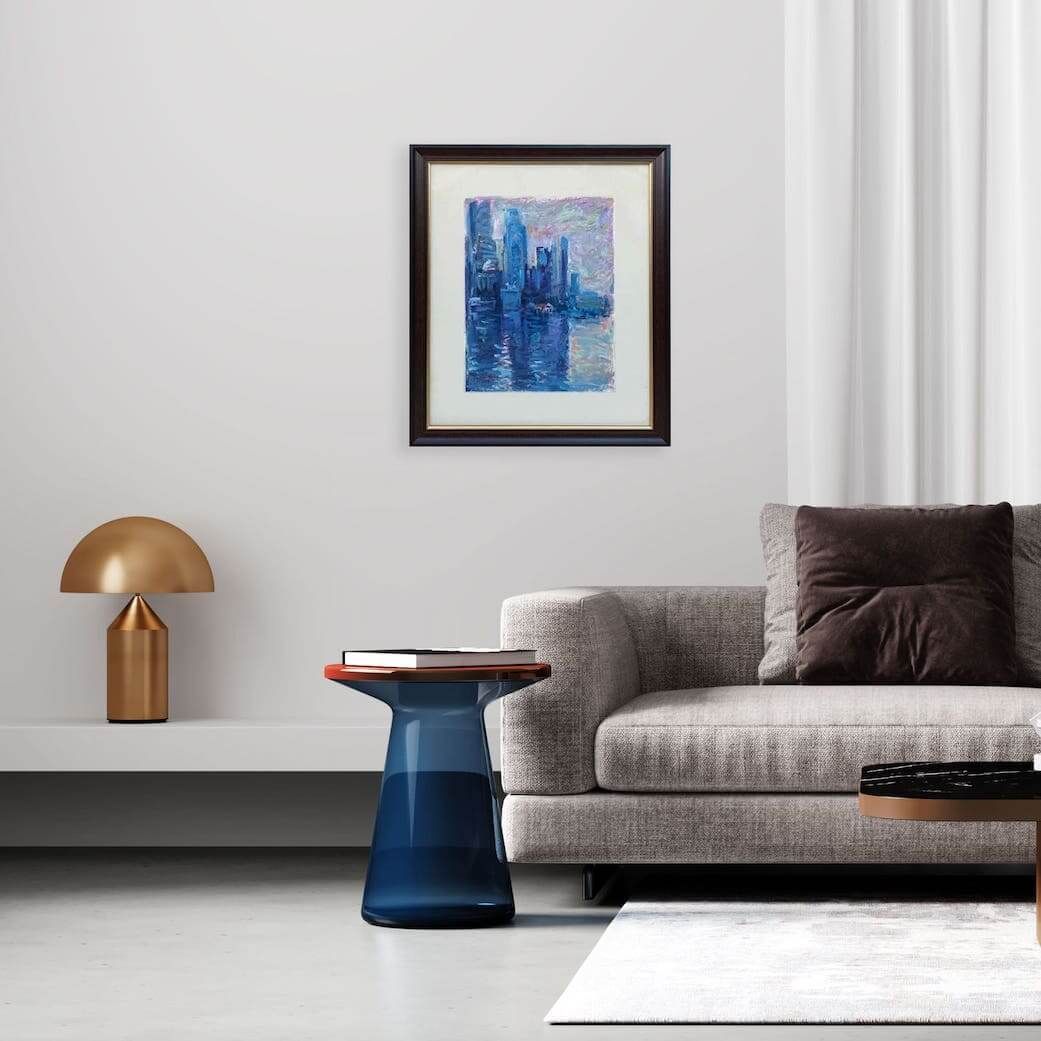Display Tips Based on Painting Mediums
How Should I Display My Painting?
Display Tips Based on Painting Mediums
Each type of painting medium has its own unique characteristics and requires different levels of care in terms of handling and displaying.
Understanding these can help you display them appropriately.
Oil Paintings
These are quite durable and often do not require glass framing. They can handle a bit more light than watercolours, but still avoid direct sunlight.
The rich textures of oil paintings are best appreciated with angled lighting that highlights the brushstrokes.
Display
Avoid direct sunlight to prevent yellowing or cracking. Oil paintings take months or even years to fully dry, so avoid touching the surface.
Framing
Use a deep, sturdy wooden frame to complement the texture of the paint. No glass needed unless heavily varnished.
Wall Placement
Choose a wall away from heat and humidity.
Ensure they are hung in a well-ventilated area to allow airflow and avoid moisture buildup, preventing mould growth.
Chinese Ink Paintings
These delicate works on paper or silk are highly susceptible to humidity and light.
They absolutely require framing under museum-quality, UV-protective glass or acrylic.
Often displayed in scroll formats, they should be hung in stable environments.
Display
Always frame behind UV-protective glass with archival backing.
Framing
Either traditional scrolls or modern minimalist frames work well.
Wall Placement
Sensitive to light and humidity, so rotate display if possible. Avoid bright light as ink fades easily.
Acrylic Paintings
Similar to oils in their versatility and durability once dry.
They are also generally displayed unframed, though some artists choose to frame them. Avoid extreme temperature fluctuations.
Display
Acrylics are less sensitive to light and humidity, making them versatile.
They are more resistant to light than oils but still prefer indirect light. They can be hung in various environments.
Framing
A simple frame is optional, but avoid glass as it can cause reflections. They can be displayed unframed if edges are painted.
Wall Placement
Keep away from heat sources. Acrylics can attract dust, so avoid placing them in high-traffic dusty areas unless covered.
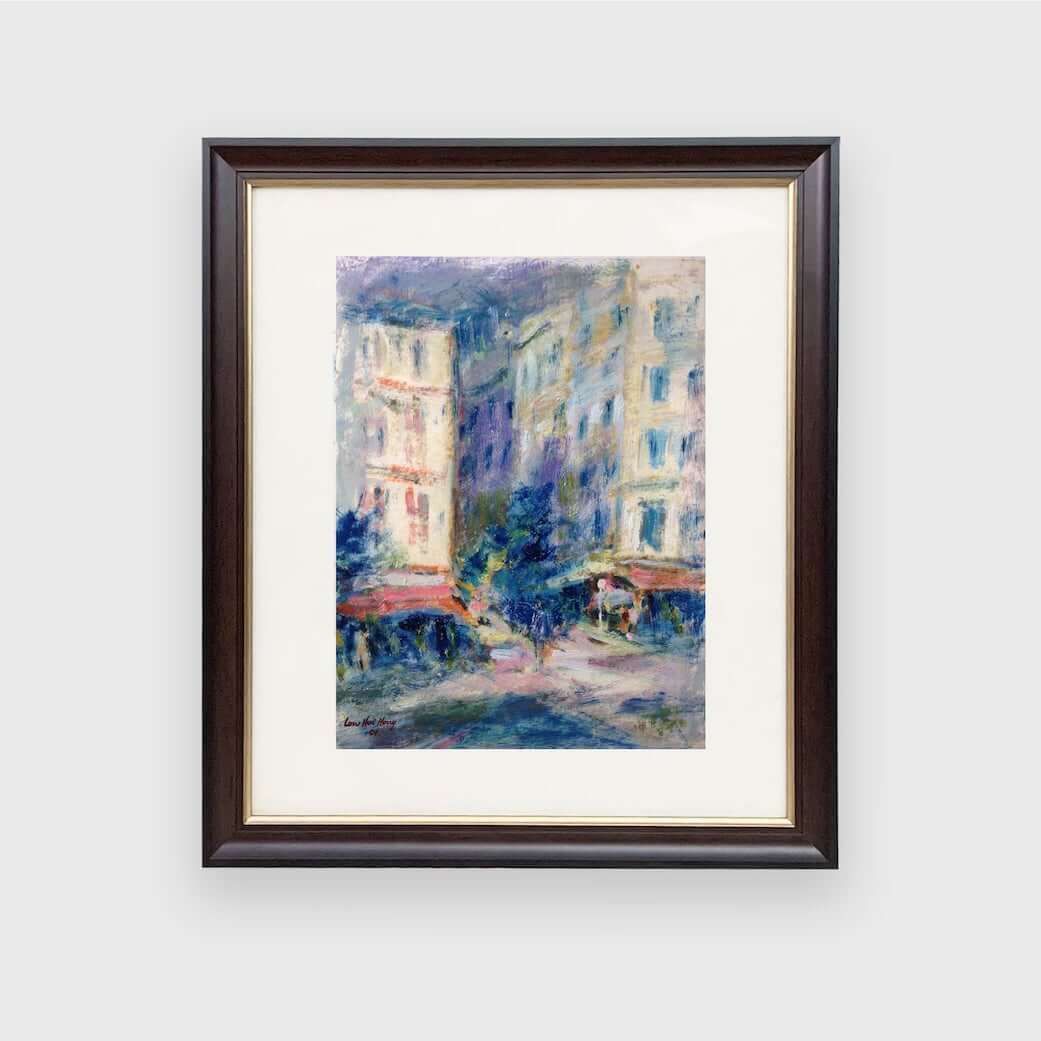
Watercolour Paintings
Extremely vulnerable to light and humidity.
Always frame watercolours under UV-protective glass and use acid-free mats and backing.
Keep them out of direct sunlight and away from damp areas.
Display
Always behind UV-protective glass or acrylic to protect them from dust and moisture.
Framing
Choose a mat board that enhances the colours without overpowering them to prevent the paper from touching the glass.
Wall Placement
No sunlight or damp areas like bathrooms. Avoid humidity and ensure paper is not in contact with condensation.
Gouache Paintings
Similar to watercolours in their composition (pigment and gum arabic), gouache is also susceptible to light and moisture.
Frame under UV-protective glass with acid-free materials.
Display
Like watercolours, gouache is fragile and should be framed under UV-protective glass to protect its delicate surface.
Framing
Recommended to use a neutral mat to avoid clashing with the vibrant colours and UV-protective glass.
Wall Placement
Cool, dry, low-light areas. Keep away from moisture as gouache is reactivated by water.
Pastel Paintings
Pastels are delicate as the pigment is essentially dry and can easily smudge.
They must be framed under glass to protect the surface, ideally with a mat to prevent the pastel from touching the glass.
Use UV-protective glass and avoid vibrations.
Display
Must be framed under glass as pastels are prone to smudging. Use fixative sprays sparingly to avoid colour shift.
Framing
Use a spacer or a mat to keep glass from touching the surface. A shadow box frame can provide extra depth and protection.
Wall Placement
Absolutely no direct light or high humidity.
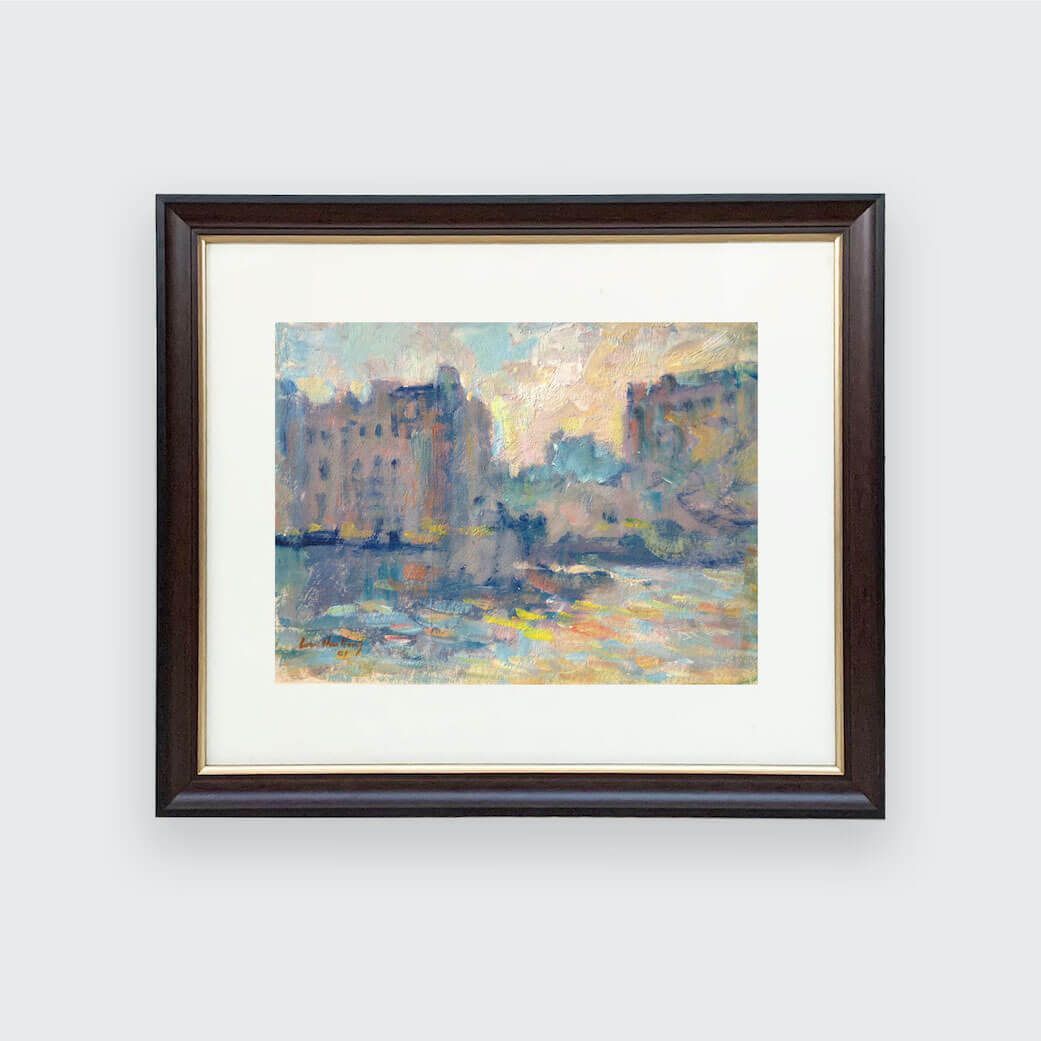
Tempera Paintings
Traditional tempera (egg tempera) is quite stable once dry but can be brittle.
It is generally displayed unframed if on a rigid panel but framed under UV-protective glass if on paper.
Avoid extreme humidity changes.
Display
Tempera is more stable than watercolours, but still benefits from the protection of UV-protective glass.
It is best kept under glass as tempera is brittle and can crack over time.
Framing
Choose a frame that complements the painting style under the protection of UV-protective glass, especially for egg tempera on wood.
Wall Placement
Keep in a stable-temperature environment. Avoid areas with high foot traffic to prevent vibrations.
Encaustic Paintings
Made with heated beeswax and pigment, encaustic paintings have a unique texture.
They are relatively durable but can be susceptible to extreme heat, which could cause the wax to soften or melt.
Avoid direct sunlight and heat sources.
Display
Encaustics are resilient but should be kept away from direct heat sources as wax can melt.
Framing
No glass; just a sturdy simple frame that allows the texture to shine or edge treatment.
Wall Placement
Room temperature, shaded wall. Keep away from heat sources as wax can soften.
Fresco Paintings
These are wall paintings, often incorporated directly into architecture.
As such, you are unlikely to "display" one in your home unless you own a historic building!
If you acquire a movable fragment, it would be treated more like a fragile artifact and displayed in a controlled environment.
Display
Frescoes are typically murals, so they are displayed as part of the wall.
Ensure the wall is stable and protected indoors in a controlled climate.
Framing
Mount on a reinforced backing if not already supported and consider protective coatings if necessary.
Wall Placement
Keep stable humidity and avoid vibrations or heavy nearby footfall.
Mixed Media Paintings
The display method for mixed media depends entirely on the components.
If it includes paper or light-sensitive elements, frame under UV-protective glass.
If it is sculptural or includes durable elements, it might be displayed unframed.
Always consider the most vulnerable material in the piece.
Display
Consider the materials used in the mixed media piece—err on the side of caution.
If it contains delicate elements, frame it under UV-protective glass.
Framing
Protective casing or shadow box frame (that ideally highlights the various textures) may be necessary.
Wall Placement
Avoid direct light and moisture to preserve varied textures and materials. Away from kids, pets, and potential splashes.
